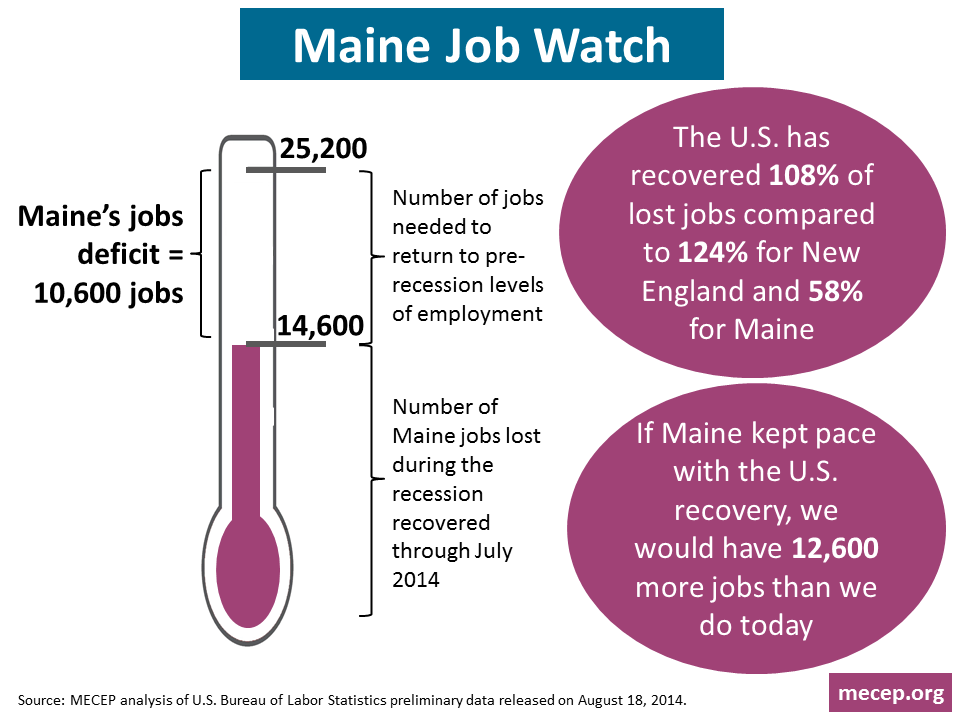The July jobs report, released today, raises continued concerns about the strength of Maine’s economic recovery. The state’s July unemployment rate of 5.5 percent remains unchanged from a month ago and is below the U.S. unemployment rate of 6.2 percent for July. That’s good, but today’s data also shows Maine losing ground in terms of job growth.
Maine dropped 900 jobs from the adjusted figures for June including 600 private-sector jobs. It’s important to note these figures will likely change with future revisions, but they’re the best available data we have at the moment. What’s more troubling is that Maine appears to be losing ground relative to the job recovery of other states. Maine has recovered 58 percent of the jobs lost during the recession which ranks 43rd among all states and Washington, DC. By contrast, the US has recovered 108 percent of jobs lost in the Great Recession and New England has recovered 124 percent. The state still needs 10,600 jobs just to return to pre-recession levels and 12,600 to keep pace with the US recovery.
Against this backdrop, over 90,000 Mainers are still struggling to find work according to data released in July by the Bureau of Labor Statistics. A stubbornly large number of part-time workers who want more work but can’t find it is driving this trend. In fact, Maine has the 6th highest percentage of “involuntary” part-time workers in the nation. That’s 40,300 workers who want more work but can’t find it.
The high percentage of “involuntary” part-time workers is an important fact to bear in mind when considering Maine’s relatively high employment-to-population ratio. This ratio accounts for all workers as a share of the total adult population and provides a useful alternative to the monthly unemployment rate. True, Maine has one of the largest increases in the employment-to-population ratio of any state, though it remains well below pre-recession levels. This would suggest that, despite relatively low-wages and limited job opportunities, Mainers are doing their best to make ends meet even if that means taking a part-time job in the absence of full-time work.
Another factor driving Maine’s high employment-to-population levels are older workerswho have either reentered the workforce or are working longer. The employment rate for prime-working-age Mainers—those who are most likely to be raising families—has not improved at all from 2009 to 2013.
Today’s jobs and employment data tells only part of the story of the challenges working Mainers face. To attain a more complete recovery Maine’s unemployment and employment-to-population ratio must return to historic levels AND not be sustained by part-time workers who want more work or by older workers who are remaining in the workforce out of economic necessity. A real recovery would afford workers access to jobs that result in increased income and financial security. More than five years since the end of the recession, we still have a long way to go.




